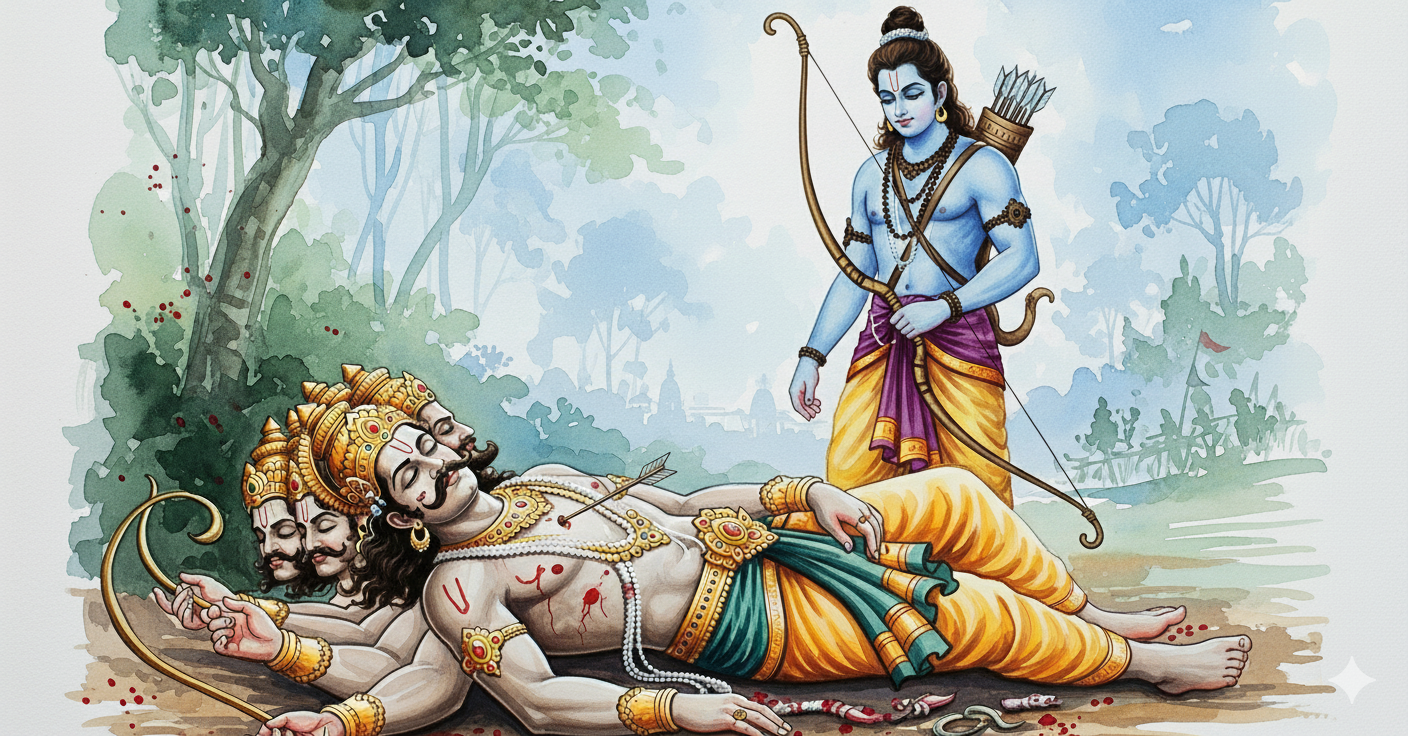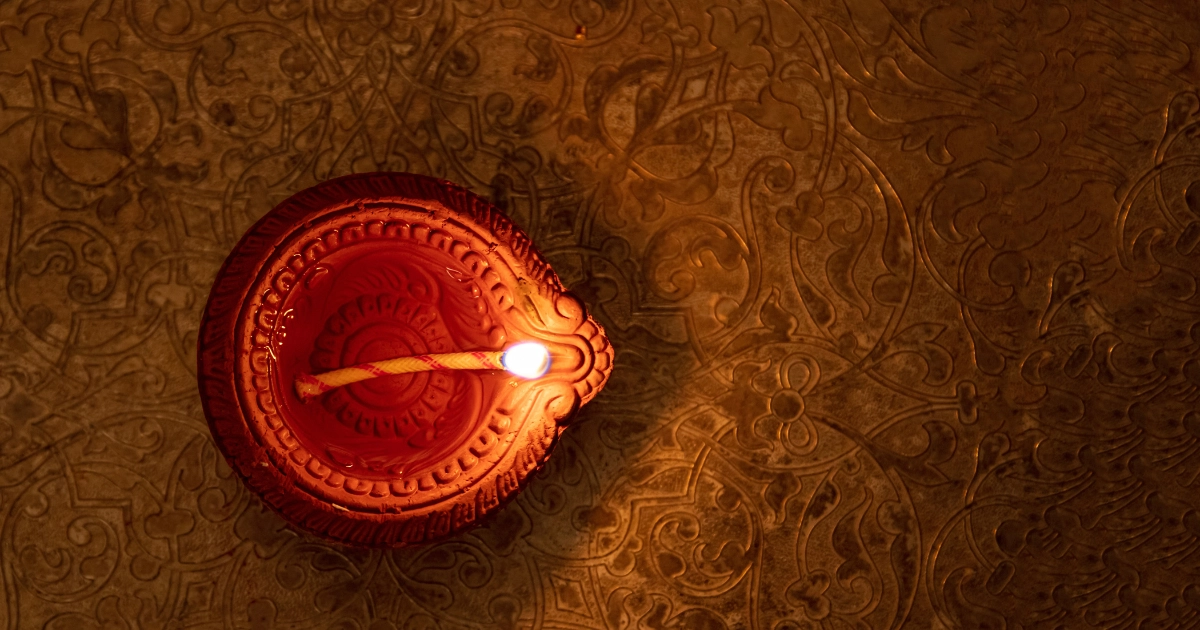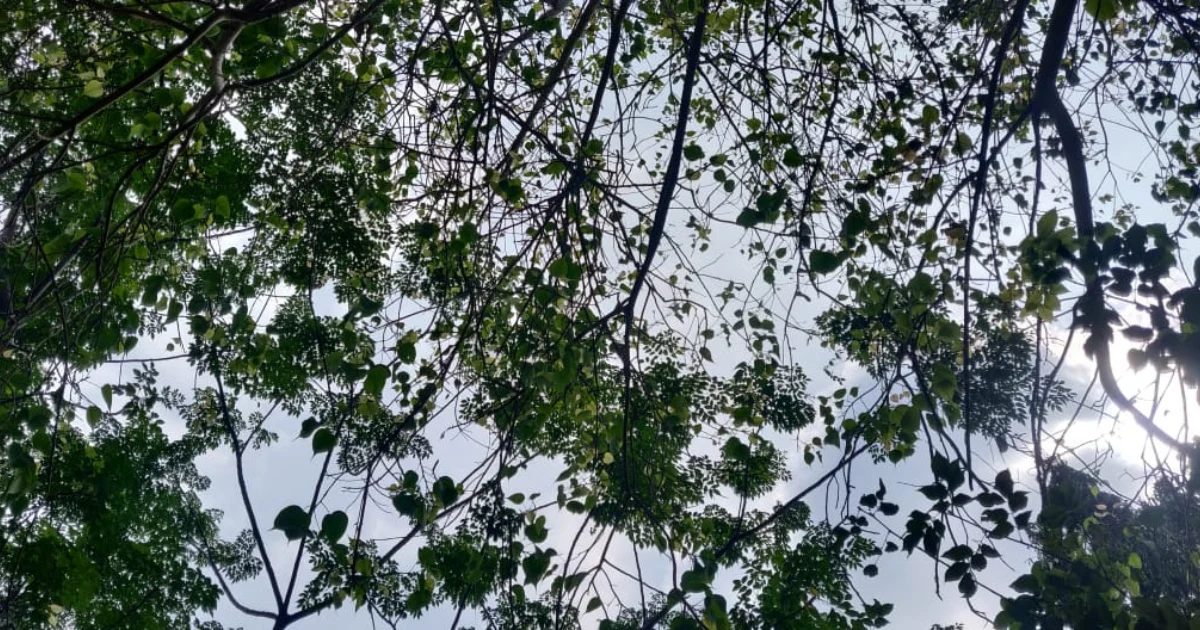Recently, there has been a Twitter (X) debate on whether Rāvaṇavadha resulted in brahmahatyā doṣa for Rāmacandra. Whether it did or not was not as interesting as some of the aspects in that debate and the attendant implications!
Read this X thread for contextual references: https://x.com/jamvasu/status/1960758627016597582?t=Uh2MCkJlr96cGYaSybJyKA&s=19
Summary of Arguments
Broadly, there are two positions, though each has several variants. Those arguing that Rāma did not incur the doṣa say this:
- Rāmāyaṇa itself does not mention any such doṣa
- Smṛitis are clear that killing a brāhmaṇa with deviant conduct would not result in any doṣa, so Rāma did not naturally incur any doṣa
- Criminal conduct of a brāhmaṇa entitles him to be killed, or at least if he is fighting like a warrior, killing him in a battle cannot result in incurring any brahmahatyā doṣa, because in that context, he is not even acting as a brāhmaṇa
- Paurāṇika references are lower in precedence to aitihāsika, so they cannot be seen with the same level of prāmāṇya as Rāmāyaṇa/Mahābhārata
Those arguing that Rāma did incur brahmahatyā doṣa say this:
- Skanda and Padma Purāṇa are explicit in mentioning that Śrī Rāma incurred the doṣa and expiated for it
- Including Rāmāyaṇa, there is no explicit mention anywhere that Rāma did not incur the doṣa (so the only mentions, being affirmations, the doṣa was incurred)
- Pramāṇa precedence does not matter since there is no contradiction between Rāmāyaṇa and the paurāṇika mentions
Now this is just an academic debate, but there are several implicit matters associated with (a) formal knowledge, (b) the current socio-political discourse, and (c) religious traditions. Let us do a brief survey of these.
Implications—Formal Knowledge
Firstly, this would not even be a technical debate. Debate is when there are mentions, both affirming and negating doṣa, as to the precedence of pramāṇa, or which traditions really take those positions. When Rāmāyaṇa is silent and Purāṇa affirms, Purāṇa is simply bringing completeness to what Rāmāyaṇa leaves unsaid. This is very much a valid way to look at it. Rāmāyaṇa’s completeness is primarily about the affirmation of daivatva and the ideal nature of Rāma through His journey. Including the nature of Rāmarājya, there is a lot of detail in the Uttara Rāmāyaṇa. There are several details we find about sacred geography in the Purāṇa. In fact, the Skanda Purāṇa narration of Ayodhya's sacred geography was instrumental for the win on the Hindu side in the Ayodhya case. It would not be meaningful to reject Purāṇa’s validity per one’s convenience. Either it is valid knowledge or it is not, and rejection/questioning of any specific part of it has to be by pramāṇa precedence (such as Śruti pramāṇa). There is no such case for questioning in this matter.
That said, there is a matter that needs to be understood—a lot of poisonous narratives around Itihāsa, lionizing the aitihāsika villains/adhārmika characters and mudslinging on aitihāsika heroes/dhārmika characters in the discourse, are being debunked by some of the Hindus, using Itihāsa as a primary source. So it may seem that rejection of matters based on their absence in Itihāsa is a valid position to take. But it is not really so. Itihāsa is illustrated dharma śāstra, and the nature of dharma is something where there can be no contradictions/inconsistencies. The meaningful position will be to take positive affirmations in Itihāsa as valid. For matters that are outside Itihāsa, the paurāṇika lore is a natural complementary text. For instance, the adhārmika nature of Karṇa or Rāvaṇa is not disputed in the Purāṇas. But there is sacred geography extolling their tapas. Which in itself cannot be a contradiction. If the ways in which consistency and completeness are achieved in traditional knowledge are appreciated, it would not be difficult to hold a consistent position and not entertain poisonous narratives.
Does that mean one should widen the scope to paurāṇika lore when one wants to primarily pursue Itihāsa? No, it simply means one need not make conclusions based on absence. How, then, does this work for Draupadī-Karṇa fantasies in narrative? That is not a case of absence; those are absurd for any dhārmika literature. While this does increase some work, it is more of an onus on the fantasizers to show valid sources and not folklore. Even the sthala Purāṇa is not folklore; it is what connects the believers to their sacred geography. It is not as rigorous and formal as the Itihāsa and is more orally documented. The nature of dharma as attested in Itihāsa takes precedence to ascertain what part of it should be accepted and what not.
This accommodation, while sticking to Itihāsa, will help resolve significant gaps.
Implications—Brahmahatyā
One main implication of accepting that ‘killing a bad brāhmaṇa results in brahmahatyā’ is about the nature of the doṣa and why such a special treatment towards brāhmaṇa should exist, especially when the brāhmaṇa is unethical or criminal.
Firstly, there is no hidden agenda or VIP treatment—the śāstras extol the special position of brahmaṇya and satva guṇa that a brāhmaṇa is expected to exemplify, as an ideal to emulate. Upon even a cursory examination, most of the features of the most civilized conduct are found in the brāhmaṇa’s ideal conduct. So exemplifying it is a natural ideal that the texts uphold. In which case, it might make sense to proscribe killing a guy who lives that ideal.
However, why should it be a doṣa to kill someone with a criminal conduct?
The logic is not social as much as it lies in the nature of brahmaṇya. Broadly, brahmaṇya is about (a) knowledge function, (b) tapas. The former is more social in perception, but the latter is spiritual. Rāvaṇa, who assaults women, tortures ṛṣis and sādhus, is thus not only entitled to penalty, but liberating the world from him is a great service. And the divine has Himself descended to perform this act. That, however, does not negate the brahmaṇya. To this date, while we seek out Rāmacandra parabrahman, we also chant the Jaṭapāṭha of śruti that Rāvaṇa gave, the Śiva tāṇḍava, the Mahannyāsa, and so on. His millennia of tapas is not negated by it. There are, in fact, mantras like Khaḍga Rāvaṇa chanted even today.
Now, does all this make him ‘a good person’? Or even a ‘good brāhmaṇa’? Not at all.
But that does not negate the above either.
And this is not really the case with Rāvaṇa or brāhmaṇas alone—the rogue conduct and spiritual contributions are parallel truths about many paurāṇika villains—Kārtavīrya, Vālī, Karṇa, and so on. So our sacred geography is there for all of them. We know them as being adhārmika, both as historic characters and also as symbolic ills that the upāsanā of heroes eliminates in our being.
So, in the case of Vṛtrāsura or Rāvaṇa, the need for them to be killed for loka kalyāṇa does not alter the brahmahatyā incurred by their slayers. This is the picture Purāṇa gives us.
It should be noted that any egalitarian position, apparently, is simply an ask for fairness, such as ‘why should we give special treatment to brāhmaṇas with misconduct?’. The answer is simple. As a social code, his general conduct is expected to be of a higher order, and his misconduct actually derives a greater penalty, barring the death penalty. And there are indeed cases where death is warranted. Brahmahatyā does not preclude any of these. But that does not answer for the spiritual dimension, and brahmahatyā cannot be dismissed from an āstika position. In short, it cannot be a secular position.
But definitely, this is inconvenient to the ones trying to subordinate the spiritual to social, reducing varṇa to occupational grouping. It better be inconvenient to them, as it undermines the fundamental spiritual nature of the concept for temporary convenience.
Implications—Religious Traditions
There is another aspect to this, of diversity of traditions and the positions they take. For instance, certain Vaiṣṇava positions uphold that Śrī Mahā Viṣṇu cannot incur any such doṣa and is anāgha. Even those uphold the brahmahatyā doṣa incurred by Indra, Vīrabhadra, etc., except for Viṣṇu. So, regardless of the brāhmaṇa ‘being the bad guy’, killing him does result in brahmahatyā doṣa even for Vaiṣṇavas.
Now this needs to be put in perspective with respect to Vaiṣṇavas. Vaikuṇṭha is an abode of śuddha satva. Viṣṇu pārṣadas like Jaya-Vijaya are expected to be beings of śuddha satva. A temporary doṣa brought a curse upon them, and Rāvaṇa is a result of that. So removal of that doṣa gets him back to Vaikuṇṭha. With his innate nature being that of a Vaikuṇṭhavāsi, bhakti, tapas are natural for him, with the rajo and tamo guṇa doṣas being extrinsic and nullified. So seen this way, killing him was his Lord liberating him from these negative traits, so that his intrinsic nature shines again.
Needless to say, there can be a special argument for Viṣṇu, but that does not actually negate brahmahatyā incurred by killing a ‘bad brāhmaṇa’, as is clear in many other cases. This, however, helps simplify the popular bhakti discourse— ‘gods can do anything but do not suffer any consequences’, which tradition neither actually upholds, nor does this message have great positive consequences.
Also, not all traditions agree with this logic. If Rāma indeed is dharma vigraha and has taken that form to demonstrate ideal conduct, it is basically showing the readiness to face the consequences for doing the right thing, no matter how bad those consequences are. And both Rāmāyaṇa and Bhāgavata are examples of that. The consequences they face do not negate their divinity; in fact, it only establishes how the upādhi honors all karma, though the birth itself is not due to karma.
To demonstrate this is one of the purposes of incarnating.






